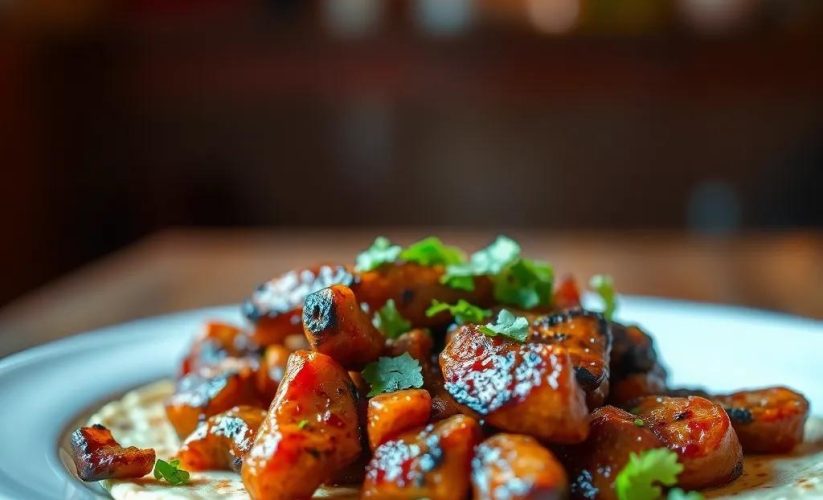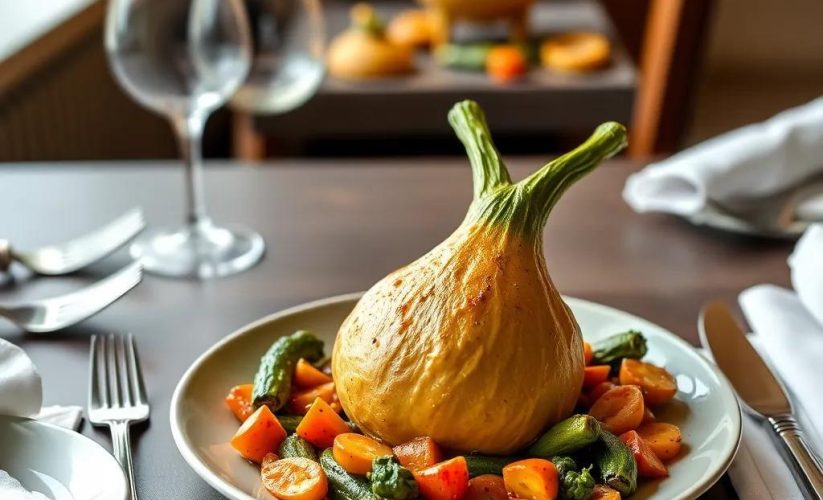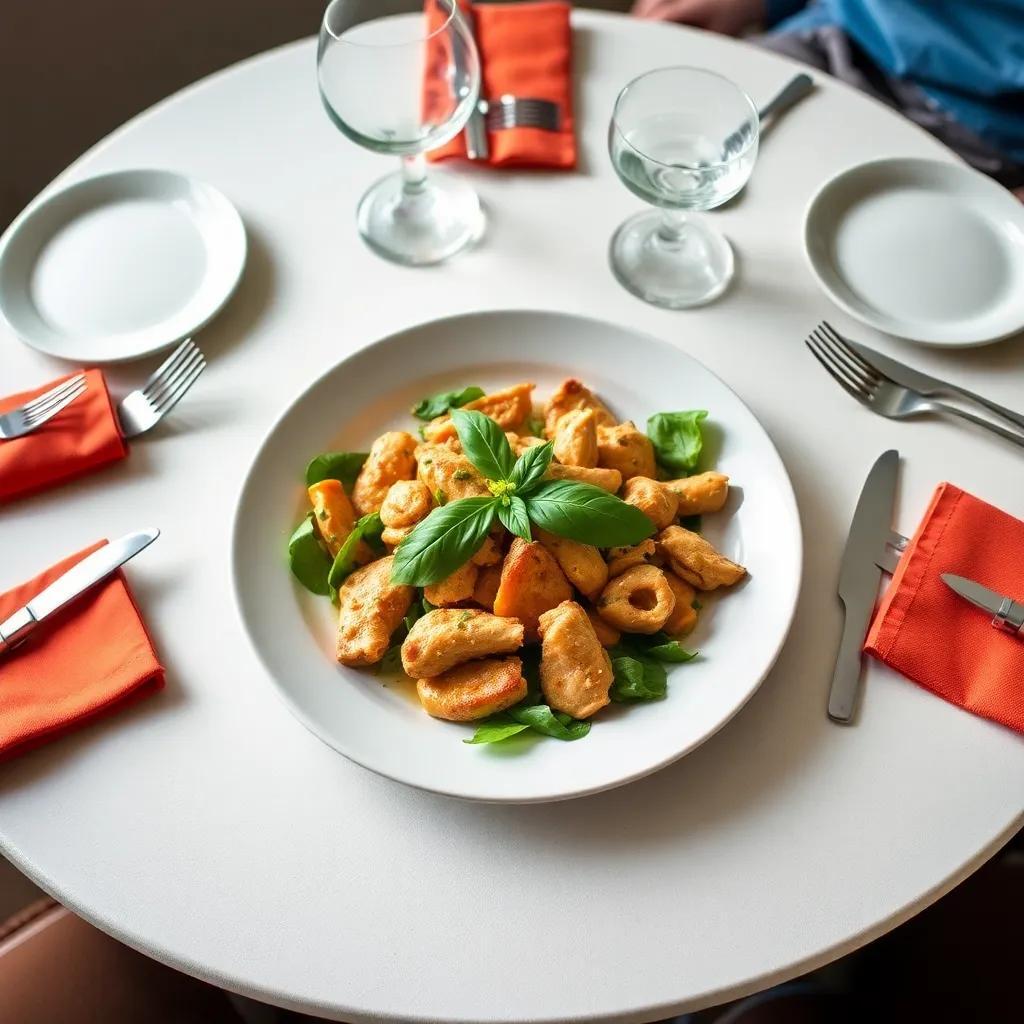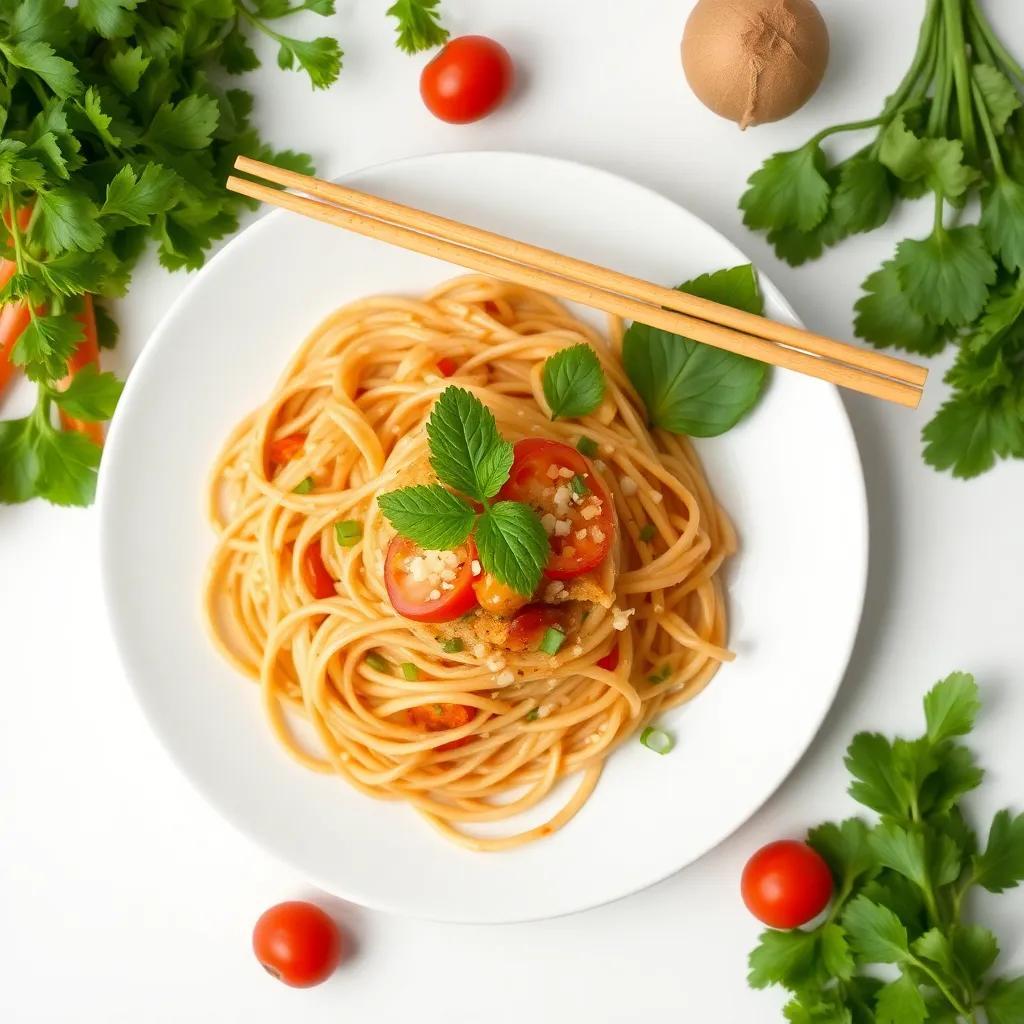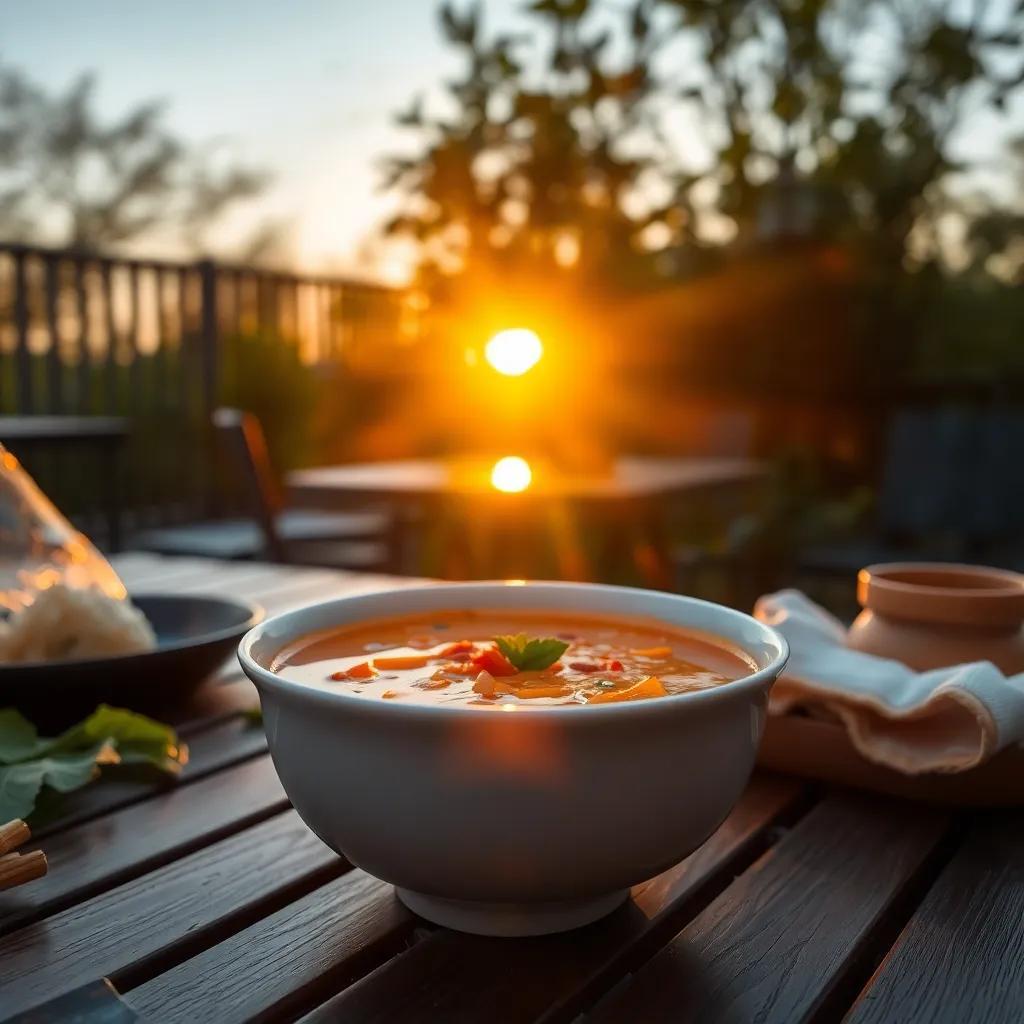Unlock the Rich Flavors of Authentic Massaman Curry: Easy & Gluten-Free
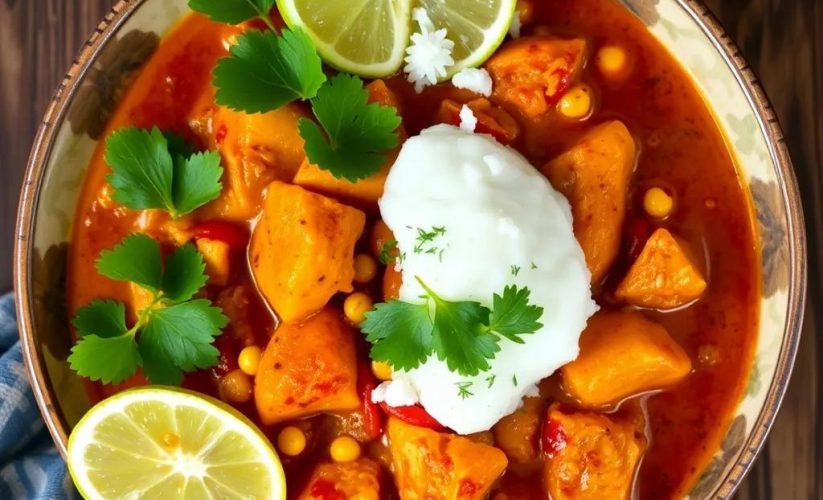
Unlock the Rich Flavors of Authentic Massaman Curry: Easy & Gluten-Free
🌍 Cuisine: Thai
⚙️ Difficulty: Easy
Ingredients
Nutrition Facts
420
Instructions
- Heat the vegetable oil in a large pot or deep skillet over medium heat.
- Add the Massaman curry paste and sauté for 1-2 minutes until fragrant.
- Pour in half of the coconut milk and stir well to combine with the curry paste. Cook for 5 minutes, stirring occasionally, until the coconut milk starts to separate and the oil begins to surface.
- Add the chicken pieces to the pot and cook for 5 minutes, stirring to coat the chicken in the curry paste mixture.
- Pour in the remaining coconut milk and the broth. Stir well and bring to a gentle simmer.
- Add diced potatoes, sliced onions, cinnamon stick, and bay leaves to the pot. Stir to combine.
- Cover and simmer the curry on low heat for about 30 minutes, or until the chicken is cooked through and the potatoes are tender.
- Stir in the fish sauce, tamarind paste, and palm sugar. Adjust seasoning to taste by adding more fish sauce or sugar as desired.
- Remove the cinnamon stick and bay leaves before serving.
- Stir in the roasted peanuts or cashews just before serving for added texture.
- Garnish with fresh cilantro and serve with steamed jasmine rice or your choice of gluten-free rice.
- Enjoy your authentic, rich-flavored Massaman curry that’s both easy and gluten-free!
Serving Suggestions
- Serve over steamed jasmine rice or brown rice for a wholesome meal.
- Accompany with a side of steamed or stir-fried greens like bok choy or spinach.
- Add a squeeze of fresh lime juice to brighten the flavors just before eating.
- Top with additional roasted peanuts or cashews for crunch.
- Pair with a light Thai iced tea or jasmine green tea.
- Serve with gluten-free flatbreads to scoop up the curry sauce.
- Garnish with thinly sliced red chili for added heat if desired.
Table of Contents
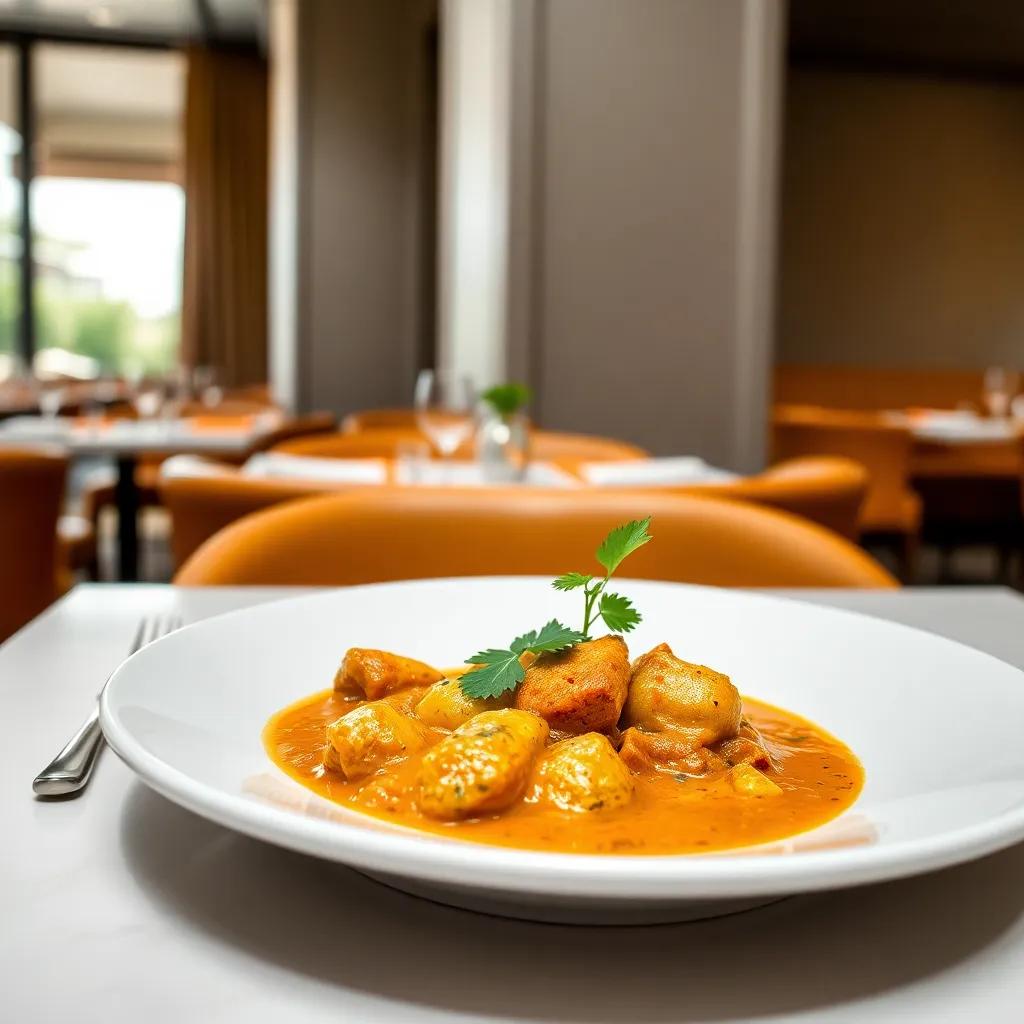
Intro
Massaman curry invites you to explore the harmonious blend of spices and creamy coconut milk that define this beloved Thai classic. This version carefully balances authentic flavors with an accessible, straightforward approach, making it perfect for home cooks looking to savor something special without the fuss. Whether you’re busy weeknights or entertaining friends, this dish delivers rich, comforting warmth that feels both exotic and familiar.
What makes this Massaman curry truly stand out is its versatility and approachable nature. It’s the kind of meal that transforms simple ingredients into a deeply satisfying experience, bringing layers of sweetness, tang, and gentle heat together in one pot. Ideal for sharing, it shines as a centerpiece for cozy dinners or festive gatherings, pairing beautifully with fragrant jasmine rice and a fresh squeeze of lime to brighten every bite.
Beyond taste, this recipe respects dietary needs by being naturally gluten-free without compromising any of the complex aromas or textures that make Massaman curry so irresistible. It’s an inviting invitation to embrace bold flavors while keeping the cooking process stress-free and enjoyable—proving that authentic doesn’t have to mean complicated.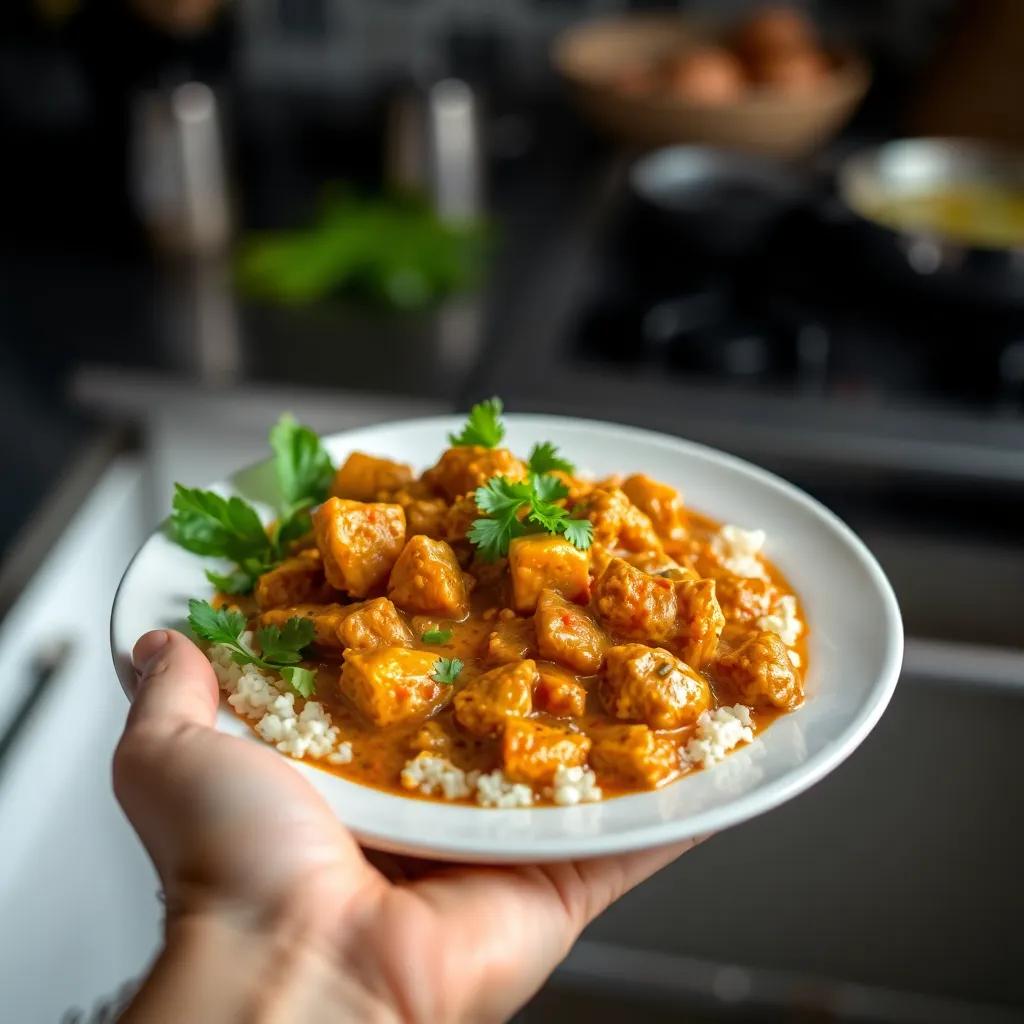
Ingredient Notes
When crafting an authentic Massaman curry, a few key ingredients truly elevate the dish from ordinary to exceptional. Understanding their roles and sourcing tips will help you unlock the rich, layered flavors characteristic of this Thai classic.
Massaman Curry Paste: This is the heart and soul of the curry, comprising an aromatic medley of spices such as cumin, coriander, cloves, and cardamom, which set it apart from more common Thai curries. For the most authentic taste, look for a high-quality, gluten-free brand or consider making your own paste at home using fresh dried chilies and toasted spice powders. If you’re pressed for time, a store-bought jar works well—just check the label to ensure it contains no hidden gluten or additives.
Tamarind Paste: Tamarind adds the signature tangy depth that balances the curry’s natural sweetness and spices. When buying tamarind paste, opt for a pure, unsweetened variety for full control over flavor adjustment. Some tamarind blocks are available dried—soaking and straining them can yield a fresher, more vibrant tang but requires a bit more preparation. If you can’t find tamarind, a mixture of lime juice and a touch of brown sugar can serve as a substitute, though the flavor will be milder and less complex.
Palm Sugar: This alternative to regular brown sugar contributes a subtle caramel-like sweetness with notes of toffee and molasses, complementing the curry’s spices beautifully. Authentic palm sugar is often sold in discs or blocks and can be grated as needed. If unavailable, light brown sugar can be used, but try to avoid refined white sugar, which lacks the depth to marry well with the curry’s richness.
Roasted Peanuts or Cashews: Adding roasted nuts just before serving provides a satisfying crunch and a nutty aroma that enhances the overall texture and character of the curry. While peanuts are traditional, cashews offer a slightly creamier, buttery nuance. For gluten-free cooking, ensure nuts are plain and unsalted, as some flavored or roasted nuts may contain additives that could compromise dietary restrictions.
Together, these ingredients create a symphony of flavors—spicy, sweet, tangy, and savory—that make Massaman curry a memorable dish. When shopping, seek out fresh, reputable sources or specialty Asian markets, and keep your pantry stocked with these essentials to bring a touch of Thailand’s culinary heritage into your home kitchen with ease.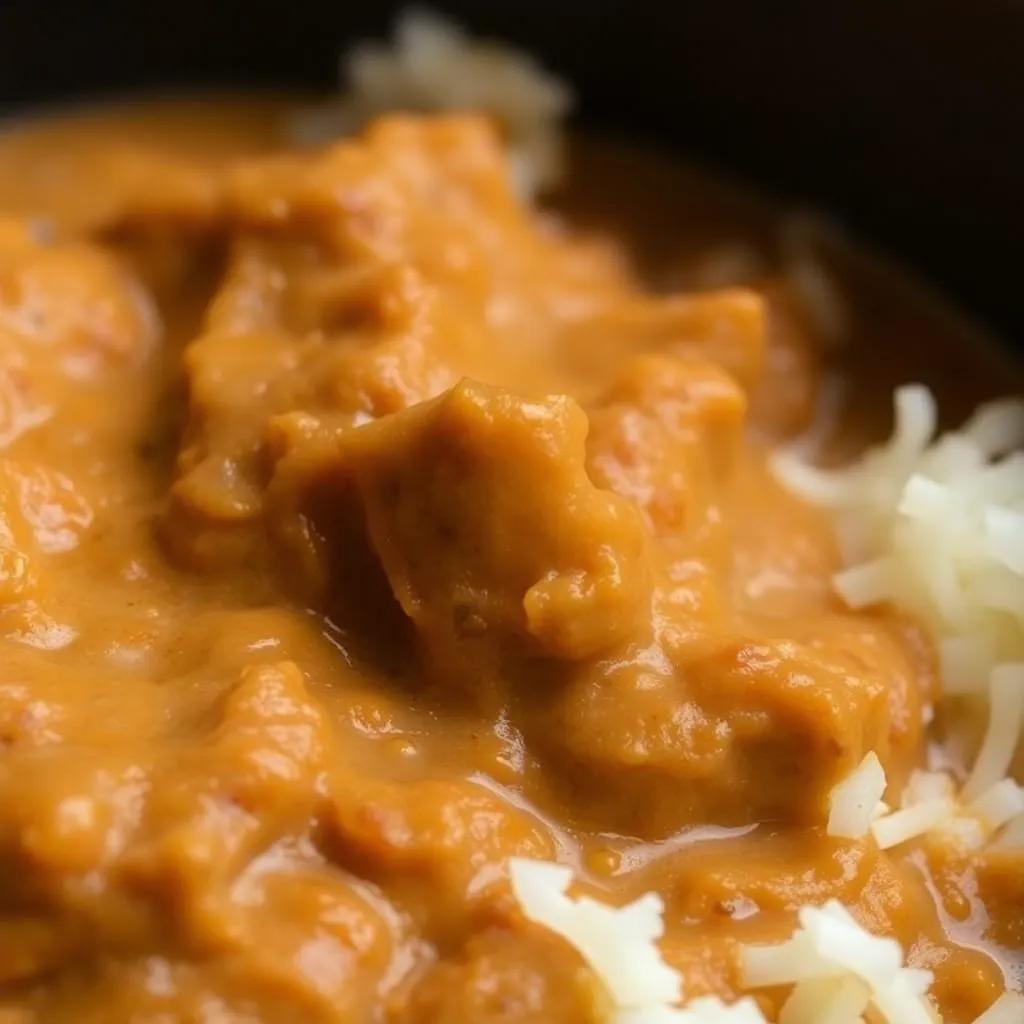
Tips & Variations
To elevate your Massaman curry experience and make this dish truly your own, consider these practical tips and creative variations that cater to a range of tastes and dietary preferences.
- Maximize Flavor Development: For a deeper, richer curry, gently toast the whole spices (like cinnamon sticks and bay leaves) in the dry pan before adding oil. This quick step awakens their aromas and adds an extra layer of complexity. Similarly, allowing the curry paste to fry slowly in oil until fragrant—not rushed—helps extract the essential oils and unlocks bold flavors.
- Protein Swaps: While chicken thighs are tender and juicy, this curry also shines with beef brisket or chuck roast for a heartier meal—just extend the simmering time until the meat is fork-tender. For pescatarian options, firm white fish or shrimp can be added during the last 10 minutes of cooking. Vegetarians and vegans can substitute tofu or chickpeas, adjusting the broth to vegetable stock and swapping fish sauce for tamari or coconut aminos to keep it plant-based yet savory.
- Vegetable Upgrades: Potatoes are classic, but sweet potatoes or butternut squash add a pleasant sweetness and vibrant color. For extra greens, toss in baby spinach, kale, or green beans near the end of cooking to maintain their texture and brighten the dish.
- Spice Adjustments: Massaman curry is known for its gentle warmth rather than intense heat. If you prefer it spicier, add sliced fresh Thai chilies or a dash of chili flakes during cooking. To mellow the spice or add creaminess, a splash of coconut cream stirred in at the end can smooth out the heat and deepen the curry’s lusciousness.
- Sweetness and Tang: The balance of sweet, sour, and salty is essential to authentic Massaman curry. Taste as you go, adjusting palm sugar and tamarind paste gradually to suit your palate. If tamarind is unavailable, a mix of lime juice and a small amount of brown sugar can mimic the sour-sweet interplay, though slightly less complex.
- Nut Options and Texture Play: Roasted peanuts are traditional, but experimenting with cashews, almonds, or even chopped macadamia nuts offers delightful variations in crunch and flavor. Toast nuts lightly to enhance their nuttiness before stirring them in at the end.
- Make It Ahead: The flavors intensify wonderfully after resting, so prepare the curry a day in advance if possible. Reheat gently and add fresh garnishes like cilantro, lime wedges, or sliced green onions just before serving to refresh the dish.
- Gluten-Free Assurance: Always double-check that your curry paste, broth, and soy or fish sauces are certified gluten-free to prevent cross-contamination. For those avoiding all animal products, ensure replacing fish sauce with a robust gluten-free tamari or mushroom seasoning for an umami hit.
By thoughtfully experimenting and tailoring your approach with these tips and swaps, you’ll ensure every pot of Massaman curry you make becomes a personalized celebration of authentic Thai flavor that’s both easy and perfectly suited to your kitchen and lifestyle.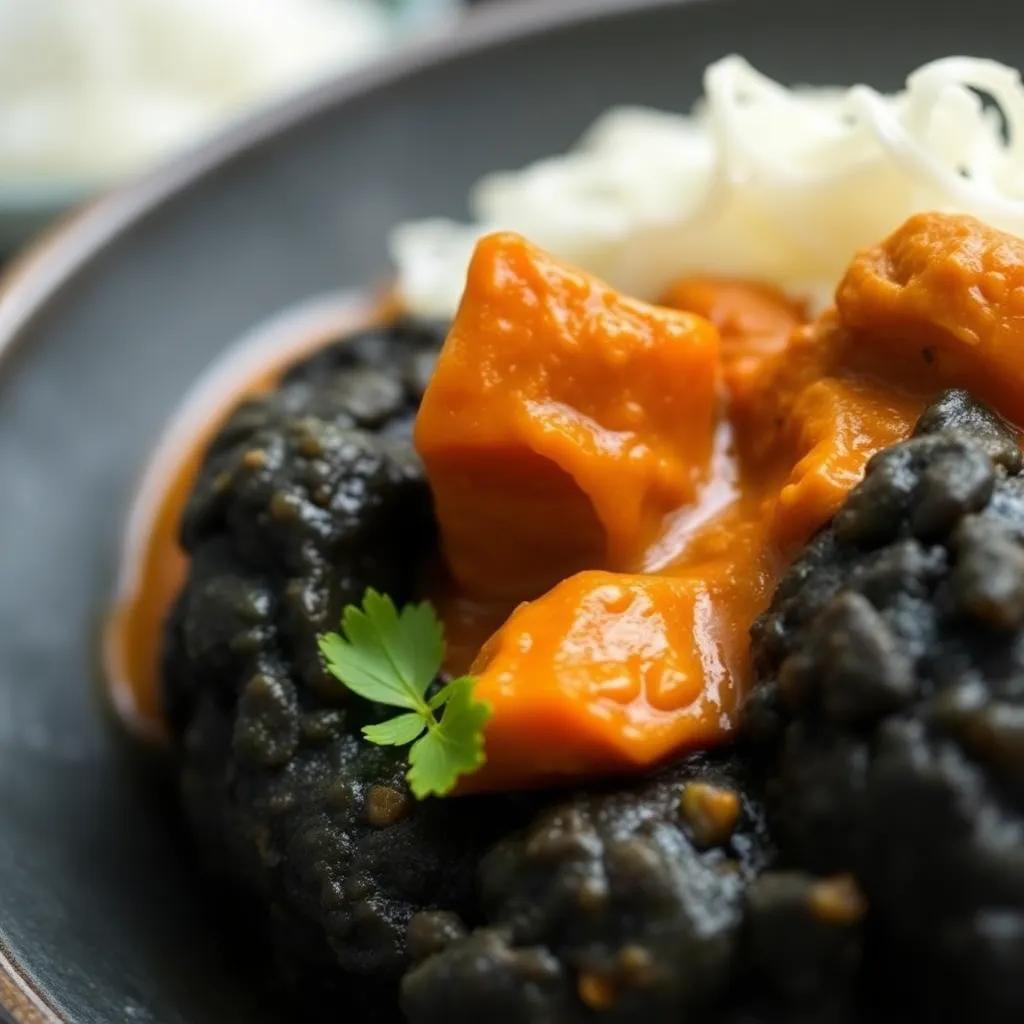
Leftovers & Storage
When it comes to savoring your Massaman curry beyond the initial meal, proper storage is key to preserving its rich, complex flavors and creamy texture. This curry actually benefits from resting and mellowing overnight, making leftovers a true treat for the next day.
To store your Massaman curry, transfer any remaining portions into airtight containers—glass or BPA-free plastic containers with tight-fitting lids work best to maintain freshness and prevent odors from mingling with other foods in the fridge. For a gluten-free assurance, ensure your containers are thoroughly clean and free from cross-contamination.
In the refrigerator, your curry will stay fresh for up to 3 to 4 days. When reheating, do so gently over low to medium heat on the stove, stirring occasionally to prevent the coconut milk from separating and to warm the curry evenly. If you prefer the microwave, cover the container loosely and heat in short intervals, stirring in between to retain creaminess and avoid hot spots.
For longer storage, Massaman curry freezes beautifully without losing much of its flavor or texture. Portion out the curry into freezer-safe containers or sturdy zip-top bags (remove as much air as possible before sealing), then label with the date. It will keep well for up to 2 to 3 months in the freezer. When ready to enjoy, thaw the curry overnight in the fridge before reheating slowly as described above.
If meal prepping, consider storing the curry and cooked jasmine rice separately to keep the rice fluffy and fresh. Pack single-serving containers with both parts, and add fresh garnishes like cilantro and lime wedges only when serving, as these lose their vibrancy after refrigeration or freezing.
Finally, if transporting leftovers for work or a potluck, a thermos or insulated lunchbox can help maintain warmth for several hours—just make sure your curry is hot before packing. Alternatively, keep the curry chilled and reheat on site if possible, to best enjoy the depth of flavors.
With these simple storage tips, your Massaman curry can bring joy well beyond the first serving, delivering comforting, authentic Thai flavors anytime you crave a warm, nourishing meal.
Behind the Recipe
Massaman curry offers a fascinating glimpse into the history and cultural exchange that shaped Thai cuisine. Unlike many Thai curries known for their sharp heat and bright flavors, Massaman reflects influences far beyond Thailand’s borders—rooted in Muslim traders and Persian spices that traveled through Southeast Asia centuries ago. Its warm, aromatic spices like cinnamon, cardamom, and cloves tell a story of blending worlds: local Thai ingredients meeting imported Middle Eastern and Indian seasonings, creating a uniquely comforting and complex dish.
This recipe honors that rich heritage by combining traditional flavor components with an easy, practical method suited for modern kitchens. Personally, it’s a dish that always takes me back to the lively night markets of Bangkok, where street vendors fill the air with the scent of slow-simmered curries and roasted peanuts. It’s a meal that feels both timeless and approachable—a true representation of how food can bridge cultures and generations.
By keeping the ingredients simple yet authentic, this Massaman curry invites you to partake in a culinary journey—no passport required. Whether you’re making it for a casual weeknight or celebrating special occasions with friends and family, it reflects a beautiful balance of history, flavor, and warmth that continues to resonate far beyond its origins.
FAQ
Can I use tofu instead of meat in this Massaman Curry?
Is this recipe suitable for a gluten-free diet?
How can I store leftovers and reheat them safely?
Can I adjust the spice level of this Massaman Curry?
Are there any great veggie substitutions for potatoes in this dish?
What are some easy protein swaps for this recipe?
Can I prepare Massaman Curry ahead of time?
Try It Yourself
There’s something truly magical about Massaman curry—its harmonious blend of spices, creamy coconut, and tender ingredients creates a comforting bowl of rich flavor that’s both authentic and approachable. This easy, gluten-free recipe invites you to bring a little bit of Thailand into your own kitchen, no matter your experience level.
We’d love to hear how your Massaman curry adventure turns out! Feel free to leave a comment, share a rating, or tell us about your own unique twist on this classic dish. Happy cooking, and may every bite be as warm and satisfying as the last!

